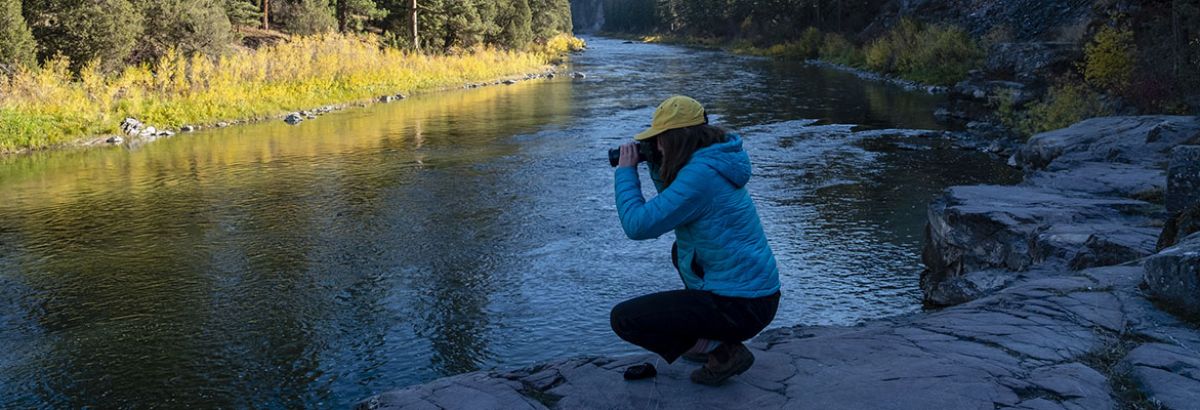Bring your future into focus with a master’s degree in Environmental Science and Natural Resource Journalism at the Ñý¼§Ö±²¥.
The School of Journalism’s graduate program is a hands-on, skills-based program that puts Ñý¼§Ö±²¥ in the field reporting on issues affecting society and the natural world.
We welcome a new cohort each fall. Priority deadline for applications is Feb. 15 and applications are accepted until April 15.
The master's program is an advanced curriculum for applicants with undergraduate degrees in journalism, environmental and earth sciences, environmental studies or natural resources. We also seek applicants with professional experience in journalism, the natural resource industries and environmental nonprofit organizations.
Our Ñý¼§Ö±²¥ make media that matters.
Their writing, reporting, photography, video and audio work is published and aired across the region and around the globe, appearing in publications like High Country News, Natural History Magazine, Civil Eats, the Washington Post and on Montana Public Radio and NPR Morning Edition, just to name a few.
You can meet some of our Ñý¼§Ö±²¥ here.
Our Ñý¼§Ö±²¥ make connections that matter.
You’ll get personal attention and gain valuable connections at the Journalism School. Our faculty members have decades of professional journalism experience and deep ties in the natural resource and media worlds.
One shining example of graduate Ñý¼§Ö±²¥ "learning by doing" and building connections is the , which supports graduate Ñý¼§Ö±²¥ as they pursue stories in Northwest Montana and Canada – the “Crown of the Continent.” The program’s goal is to inform public understanding of landscape-level conservation, conflicting demands for natural resources and community efforts to build climate resilience. Students head into the field backed by a mentor -- a veteran journalist familiar with their area of work. The Crown Reporting Project bridges journalism, science, policy and conservation, helping Ñý¼§Ö±²¥ develop specialized expertise that can lead to careers in science or environmental journalism.
Our Ñý¼§Ö±²¥ gain skills that matter.
The media landscape is changing quickly but our Ñý¼§Ö±²¥ learn the skills to lead in the new media landscape. Video, podcasting, design, documentary, social media – our Ñý¼§Ö±²¥ learn how to tell impactful stories across platforms and for a variety of audiences. At the heart of it all is storytelling and reporting.
Take for example the Story Lab course, which pairs Ñý¼§Ö±²¥ with scientists for one semester. The goal is for emerging journalists to learn how to better communicate science news; scientists also learn how to interact with the media to better tell their stories. The Ñý¼§Ö±²¥ is home to cutting-edge research, from wildlife biology to fire management and environmental health. We like to call our backyard the greatest outdoor laboratory on the planet.
We offer scholarships, fellowships and teaching assistantships to assist graduate Ñý¼§Ö±²¥. Financial aid and work-study packages are also available. Take a look at our website, send us an email or call us if you have any questions.
Applications are reviewed until April 15. We look forward to your application.
Contact program director Nadia White to chat about if this program might be right for you:
- Office: DAH 408
- Phone: (406) 243-2227
- Email: nadia.white@umontana.edu
